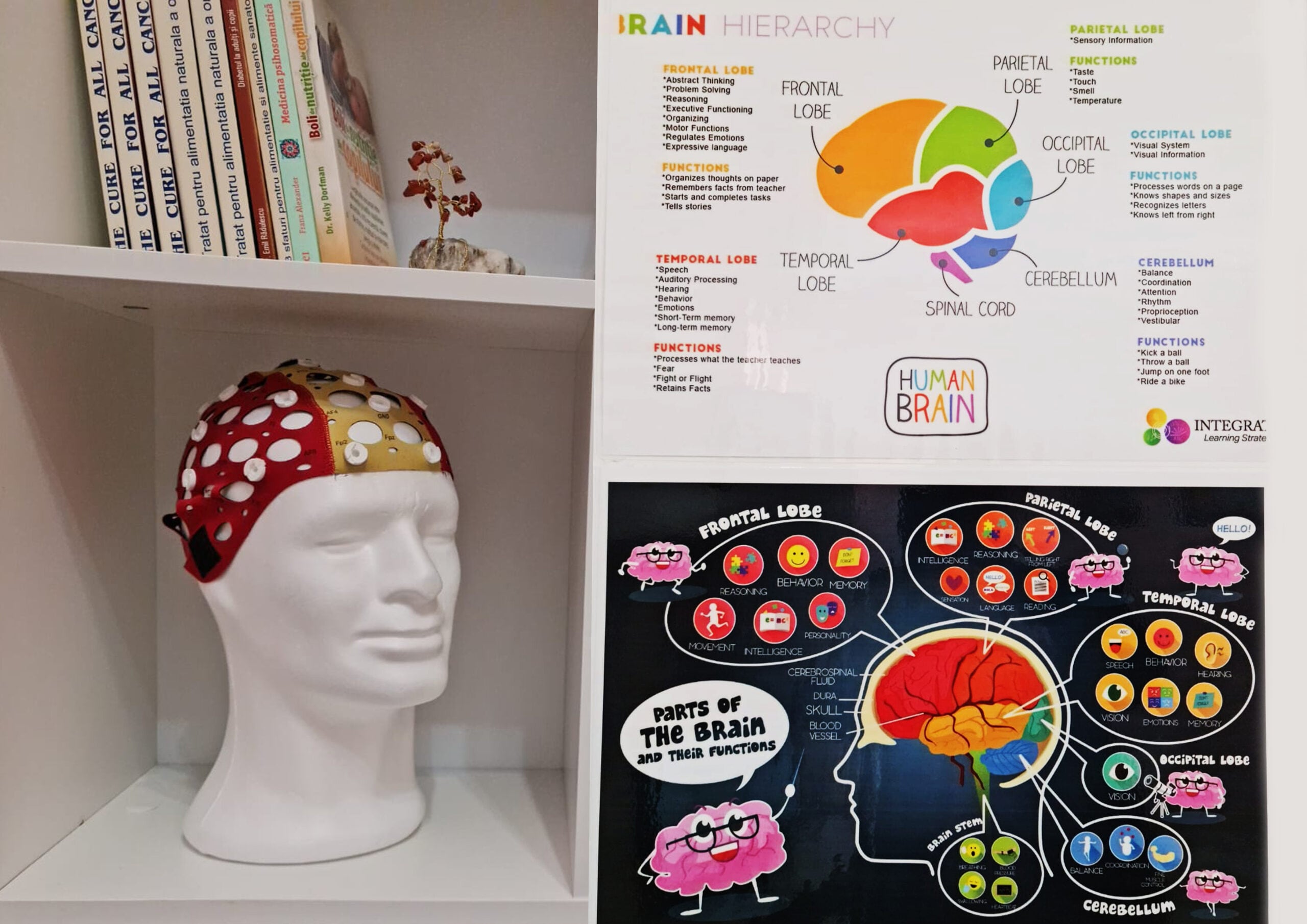The neurofeedback is used to restore brain activity toward a healthy pattern and to provide alignment in those suffering from anxiety, depression, obsessive-compulsive disorder (OCD), Attention-Deficit/Hyperactivity Disorder, (ADHD), ischemic attack, tinnitus, memory loss, insomnia and others. In addition to these, just mentioned, neuro feedback, in recent years, is recognized as a treatment in brain injury, and autism. While neurofeedback is often used for people with a wide range of conditions, its use also finds use in improving a person’s performance by increasing clarity of thought toward achieving desired results. Sportsmen, students, and other experts use neurofeedback as a method for optimizing the brain and, therefore, achieving high performance in their field of activity.
Neurofeedback is a method of technology-assisted behavioural therapy. In this way, the brain is presented with its activity in real time using visual, auditory, and tactile feedback. Using all these signals, the brain, during training, improves its ability to self-regulate and efficiently learns to change the stimulus level, in addition, also the ability in maintaining positive states. In this way, the brain adapts, and according to particular needs, finds its state of well-being and relaxation through active calm.
Neurofeedback has been used for dozens of years (1960s) as an alternative, non-medical treatment for ADHD, depression, anxiety, brain injury, stress-traumatic disorders, and many other afflictions of the brain.
Over the past decade, scientific research has shown more evidence of effectiveness that has shown not only that neuro feedback improves the effectiveness of other therapies used in the disorders and conditions just mentioned but also offers permanent improvement in these situations.
Neurofeedback is safe, efficient, and non-invasive. The effectiveness of this therapy occurs through brain neuroplasticity. This neuroplasticity is a process that allows the brain to produce new cells (neurons) and neural connections.
Through neurofeedback training, the brain becomes more efficient in controlling its own activities. As you may well understand, you will have a more stable brain (migraine, dizziness, epilepsy, panic attack–as manifestations of instability) and a more flexible brain (such as, for example, sleep disorders, attention deficit, disorders that arise from lack of flexibility). Basically, the brain becomes more performant in everything it accomplishes.
